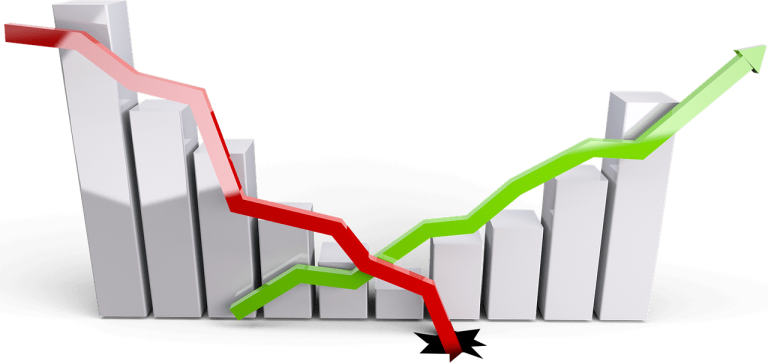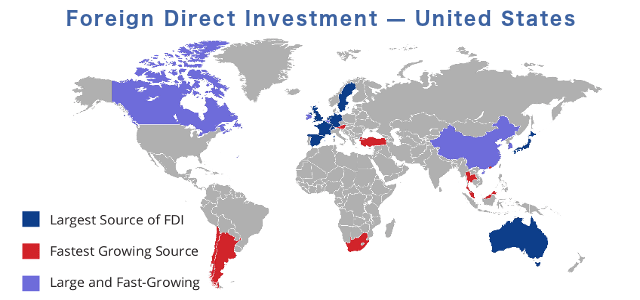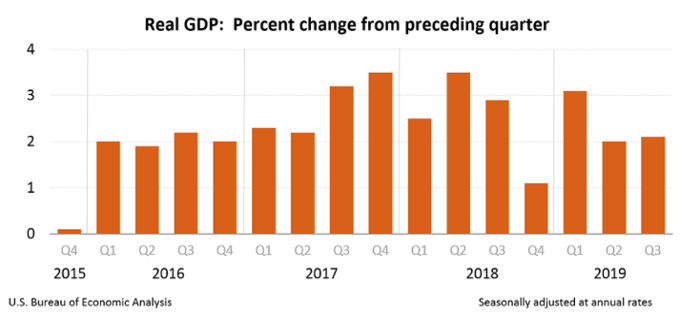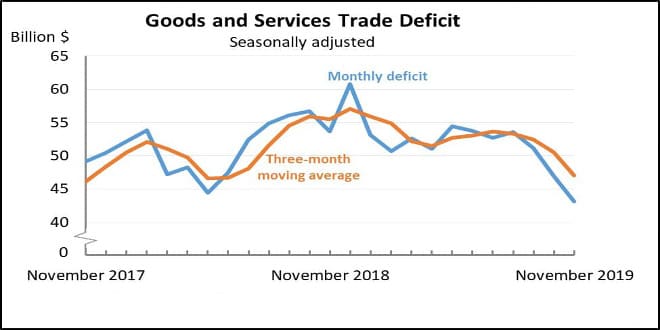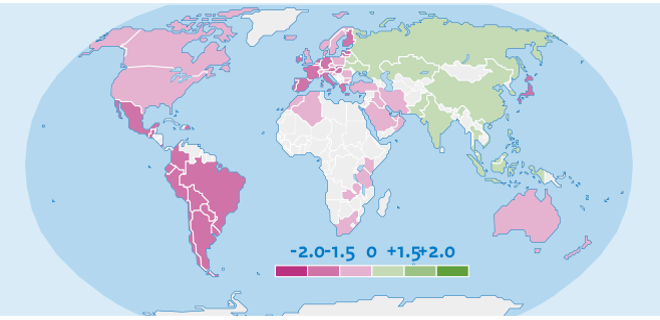An Interconnected & Interlinked World
of Business, Trade, and Commerce.
of Business, Trade, and Commerce.
GDP Computing Methodologies
A Business & Investment Perspective

A Good understanding of various methodologies used in calculating the Gross Domestic Product of different countries is essential in comparing and relating the global economies to each other. With the perspective of charting course for the expansion of business operations or looking into the global investment opportunities, having a clear understanding of the ‘real value’ of a nation’s/region’s GDP is very essential. In order to make sound decisions – based on factual data, one needs to know the components that are counted in the GDP, and also the methodologies used in computing its monetary value.
An analytical review of the components—and their relative weight, included in a country’s GDP is also very critical in getting the real picture of that country’s economy. For example, the components of ‘Government Spending’, ‘Defense Expenditure’, and ‘Health Care Industry’—if relatively excessive in relation to other economies, may in fact be more of a burden on the economy than a contributing factor to it.
To highlight the point of the relative weight of the contributing components of the GDP in an economy, consider the case of the GDP of the US: The ‘Health Spending’ in 2018 constituted 19.4% of GDP —It is projected to be 22.90% in 2019. And, the total Government Spending portion of the GDP in 2019 is expected to be 36%. Together these two components form more than 58% of the US GDP.
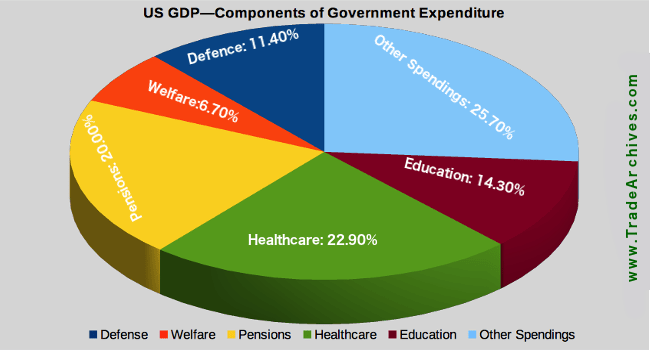
As we can see from the above case of the US GDP, the real state of an economy can be quite skewed by the heavy weight of these non-performing components of the economy—which in fact are more of a drag on the economy.
Monetary Value of GDP
Further, when it comes to comparing the national economies of different countries by their Nominal GDP, converting its value into a common currency—typically the US dollar, presents a very ’unrealistic’ picture. Since all other currencies in the world relate to the US dollar—and, the US dollar itself is not measured in any tangible manner, question arises; what the real value of the US$ is, anyhow?

To have a clear vision of the real state of a nation’s economy by way of its GDP, we need to look more deeply into it to fully understand the Real Comparative GDP of the countries.
This dissection of the GDP is presented as a help and guide to the decision makers.
Gross Domestic Product (GDP) is the measure of the monetary value of a nation’s overall economic activity—All the final goods and services produced and bought by the final user within its borders in a period of time – normally over the period of a year.
As per The Organization for Economic Co-operation and Development (OECD), Gross domestic product is an aggregate measure of production equal to the sum of the gross values added of all resident institutional units engaged in production (plus any taxes, and minus any subsidies, on products not included in the value of their outputs). The sum of the final uses of goods and services (all uses except intermediate consumption) measured in purchasers’ prices, less the value of imports of goods and services, or the sum of primary incomes distributed by resident producer units.
IMF defines the GDP as a measures of the monetary value of final goods and services—that are bought by the final user, produced in a country in a given period of time (say a quarter or a year). It counts all of the output generated within the borders of a country. GDP is composed of goods and services produced for sale in the market and also includes some non market production, such as defense or education services provided by the government. [Source: Gross Domestic Product: An Economy’s All].
In a broad sense, the Gross Domestic Product (GDP) can be described as the sum of consumption expenditure of households – NPISHs (Non-Profit Institutions Serving Households), and general government, gross fixed capital formation, changes in inventories, and exports of goods and services, less the value of imports of goods and services.
3 Methodologies For Computing the GDP
Generally, there are three ways to compute GDP; the production approach, the income approach, and the expenditure approach. All three of these methods should, in theory, give the same result. In practice though, the difference in the final outcome can be quite signifiant.
The Production approach sums the value-added—that is, total of sales less the value of intermediate inputs into the production process, at each stage of production.
The Income approach sums the incomes generated by production. It works on the principle that the incomes of all the productive factors must be equal to the value of the product produced.
The Expenditure approach (Used primarily in the United States) adds up the value of all final goods and services purchased in an economy.
In this approach GDP is therefore:
- Total final consumption expenditure:
- Final consumption expenditure of households
- final consumption expenditure of NPISHs
- final consumption expenditure of general government
- Plus gross capital formation:
- gross fixed capital formation
- change in inventories
- acquisitions less disposals of valuables
- Plus balance of exports and imports.
The Table below shows the Components of the Real US GDP for the year 2018.
| Component | Amount (Trillions) | Percent |
|---|---|---|
| Personal Consumption | $12.89 | 69% |
| Goods | $4.55 | 25% |
| Durable Goods | $1.67 | 9% |
| Non-Durable Goods | $2.90 | 16% |
| Services | $8.36 | 45% |
| Business Investment | $3.39 | 18% |
| Fixed | $3.32 | 18% |
| Non-Residential | $2.71 | 15% |
| Commercial Real Estate | $0.54 | 3% |
| Capital Goods | $1.27 | 7% |
| Intellectual (Software) | $0.91 | 5% |
| Residential | $0.61 | 3% |
| Change in Inventories | $0.05 | 0% |
| Net Exports | ($0.90) | (5%) |
| Exports | $2.55 | 14% |
| Imports | $3.45 | 19% |
| Government | $3.18 | 17% |
| Federal | $1.23 | 7% |
| Defense | $0.74 | 4% |
| State and Local | $1.95 | 10% |
| TOTAL GDP | $18.57 | 100% |
Source of Data; Concepts and Methods of the U.S. National Income and Product Accounts
Computation in the Expenditure Approach
In the Expenditure approach, the GDP is computed by the following formula:
GDP = Consumption (C) + Investment (I)+ Government Spending (G)+Net Exports (X – M).
The following is a brief description of each of these GDP components:
Consumption (C) is typically the largest GDP component in an economy. It includes private, personal, and household expenditures; expenditure on durable goods, nondurable goods and services—food, rent, jewelry, gasoline, and medical expenses. Purchases of new housing are not included.
Investment (I) includes the business expenditure in equipment – excluding the exchanges of existing assets, equipment for a factory, machinery, construction and expansion of mines, and software purchases. Household purchases of houses is also included in investment.
Government Spending (S) covers all the governmental expenditures on final goods and services including salaries of government employees and military personnel, acquisition of weapons, and any other investment by the government.
Exports (X) represents all the gross exports — all the goods and services produced in an economy for the consumption in other country.
Imports (M) represents gross imports into an economy — all the goods and services produced in another country and imported into the economy for local consumption. Imports are subtracted. [Source: OECD].
In the United States, GDP is measured by the Expenditure Approach. The Bureau of Economic Analysis (BEA) estimates these components from data obtained through surveys of retailers, manufacturers, and builders and by looking at trade flows.
Possibility of Manipulation of GDP Data
There is a lot of leeway to manipulate the data to arrive at the ‘desired’ value of GDP. The instrument of ‘Survey’ itself opens the door to ascertain the data.
Besides the ambiguity of the ‘surveys’ and the inclusions-exclusions of items in the various ‘indexes’ used in the process, the different approaches and methodologies used by various economies to calculate their GDPs, make the GDP figures rather unrepresentative of the real state of an economy, in particular in relation to other economies.
Relating non-US dollar economies to each other becomes even more unrealistic as the GDPs of all the non-US dollar economies in the world first need to be converted into US dollar at current market rate for comparison.

Since the conversion is made at a predetermined rate set by the relevant central banks for the pegged currencies (e.g., Chinese Yuan and Saudi Rial), and at the current market rates for the free floating currencies—based on the supply and demand, prevalent at the Forex Exchanges, it doesn’t reflect the real value of a country’s economy.
Further, since GDP is calculated at current (nominal) prices, it is not possible to compare even the GDP of the same economy over two periods without making adjustments for inflation.
Therefore, to represent the factual GDP of an economy, and to compare the size and state of the economies of different nations some standardization and adjustment is needed.
Real GDP—GDP Deflator
To determine Real GDP its nominal value must be adjusted to take into account price changes (inflation) to allow us to see whether the value of output has gone up because more is being produced or simply because prices have increased. A statistical tool called the price deflator is used to adjust GDP from nominal to a constant price.
The Price Deflator is a measure of the level of price changes (inflation) within the economy.
GDP price deflator is based on a selected base year – which varies by country. For the United States the base year is 2015 and the GDP Deflator for the year 2015 is 109.775. In comparison, the world’s average GDP Deflator value is 427.87. It is a very large difference!
Now consider the formula that is used to calculate the Real GDP:
Real GDP = (Nominal GDP ÷ GDP Deflator) x 100
As we can see, with the change of GDP Deflator, the outcome of GDP computation can be quite different. While the smaller GDP Deflator will inflate the Real GDP, an inflated GDP Deflator will shrink the Real GDP. There certainly is enough ‘wiggle room’ for some manipulation right here!
When it comes to comparing the economies of different countries and to have a global perspective, they all have to be in a common denominator — the GDP of all the countries have to be translated into one single currency – normally, the US Dollar.
The nominal GDP of countries is presented in US Dollars at the market conversion rate – which, most the time, is not representative of the real value of the national currency of a nation that is being converted. Thus, this mode of conversion at the ‘market rate’ presents a relative unrealistic picture of a non-US economy vs US economy.
To compare the economies of different economies, some more elaborate measures — like the Purchasing-Power Parity (PPP) exchange (conversion) rates, are used.
✍ The discussion of Purchasing-Power Parity (PPP) and its application in evaluating the GDP of ‘non-US Dollar’ economies is a subject on its own. It is covered separately under its own topic: ‘Real GDP | GDP Nominal vs GDP PPP’.
元 $ € ¥ ₿
Information
Reports & Analysis
To Help Evaluate
The Potentials For
Business
&
Investment
In an Interconnected
World
-
The Belt and Road Initiative & Made in China 2025
Riding high on the fast tracks of the Belt and Road Initiative, Made in China 2025 is rapidly making inroads into the countries... Fierce competition from Chinese companies...
-
MIC 2025 || The Changing Landscape of Chinese Economy
It was in 2015 that China unveiled its Made in China 2025 (MIC 2015) project. Since then, Chinese economy is metamorphosing and changing at a breakneck pace...
-
Top Freight Forwarders by Country
Large scale ‘local area’ Freight Forwarders listed here, through their contacts and arrangements, also provide services on a global scale. Their main strength though lies in...
-
Most of the Top Global Freight Forwarders listed here serve all the major ports across the Globe, and, through relationships with their business partners, also provide a full suite of...
-
Glossary: Shipping, Freight, & Supply Chain Logistics
Like any other professional field, the shipping/freight industry has its own unique set of terminology—A rather extensive and complex one. Here we have compiled the Glossary of the most useful...
-
Global Foreign Direct Investment—Inward Flow
A comprehensive and historical Global FDI Inward-Flow Data spanning the period of 2000—2018. The data is compiled by grouping and associating a variety of economies together; by the state of...
-
The new phase of economy in China is an opportunity for the businesses. The emphasis is now on raising the living standards of masses, implementing supply-side reforms, and opening up...
-
Top 50 Container Ports in The World
Large Capacity & Super Busy Container Ports in a country are the pointers of country’s economic potentials...Bulk of the world trade in goods—more than 90% of it...
-
Supply Chain | Definition and Objectives
Supply Chain can be viewed as a network connecting a business to its suppliers and distributers to facilitate the production, processing, and distribution of its products to the consumers. It incorporates...
-
Global Business | Supply Chain & Logistics
With the technology—and global eCommerce platforms like Ali Baba, JD.com, Tancent, Kaola, Lazada, WooCommerce, VTEX, and Shopify etc, it is easier to sell products and services Globally.
-
Shipping Logistics | The Role of Service Providers
The logistics of getting the goods delivered to faraway destinations—especially to foreign markets, is a complex business. It requires the services of outside entities to...
-
Freight Forwarders | Role in Global Commerce
Freight Forwarders specialize in taking care of the entire process for their shippers | from warehousing to the shipping of their merchandise. They act as an agent and intermediary...
-
Real GDP | Nominal GDP vs GDP PPP
In evaluating and analyzing global investment opportunities and, also in the business decision making process, we need to know the actual comparative state of the economies of various countries and...
-
With the perspective of charting course for the expansion of business or investment, an analytical review of the ‘real value’ of a nation’s/region’s GDP is essential. To this end, an understanding of the methodologies used in...
-
New Global Business Order—The Global Information Stage
Whatever the business be, it has to be ready to play on the Global Stage. It is the global arena. The Supply-and-Demand chain is global. ..There is no business that can be considered as purely a...
-
Global Real GDP Growth Rate—And Forecast
Real GDP provides an inflation-adjusted measure that reflects the true value of all goods and services produced by an economy in term of real value of...
-
Foreign Direct Investment Inward Flow in The US—A Global Perspective
The Inflow of FDI in the U.S. was up by US $50 Billion in the 3rd quarter of 2019. FDI plays an essential role in the economic growth, creating jobs, and driving exports...The tables present...
-
US Gross Domestic Product: 2019—By Quarters
Real US GDP increased at an annualized rate of 2.1 percent in the 3rd quarter of 2019—that was up from the second quarter. Real gross domestic income (GDI)...
-
Foreign Direct Investment—Impact and Analysis
Foreign Direct Investment (FDI) plays an important role in the development and growth of any country’s economy - especially the developing countries. But, in actual practice...
-
Foreign Direct Investment and Business in China
China is establishing itself as the Model Destination for FDI inflow and a hub for corporate relocation and R&D...
-
US Global Trade & Top Trading Partners | Year-to-Date
Since hitting the peak in November 2018, U.S. global trade deficit in goods and services has been on the decline. But, the declining trends in both Imports and exports...
-
The Growth of Mobile Payments and Virtual Banking—A Global Perspective
Mobile Payments, Virtual Banking, and other modes of mobile transactions - both at consumer and commercial level, are growing globally at an ultra fast pace — more so in China and Asia Pacific and...
-
Belt and Road Initiative—Objectives & Achievements
As of the end 2019, the BRI — a project to interlink the global economies with China, includes 140 countries—encompasing more than 2/3 of the world’s population. The trade on BRI is...
-
In 2019 US imports from China dropped more than 12.5 percent to US$456 billion (Source: United States’ Census Bureau ) while China’s imports from the US dropped to US$122.7 billion...
-
Humans by nature - or by need, are traders. We trade our work, services, produce, or products for money. Then, we exchange that money for the goods and services that we need. Any excess/leftover money is either directly invested or deposited in the banks—thus, making the money to recirculate in the economy again.
Information, Data, and Reports organized alphabetically By Topic:
Global Business
Investment
Trade & Commerce
Always The Key to
to Wealth & Prosperity
Since before the days of
Camel Caravans & Sailboats

















